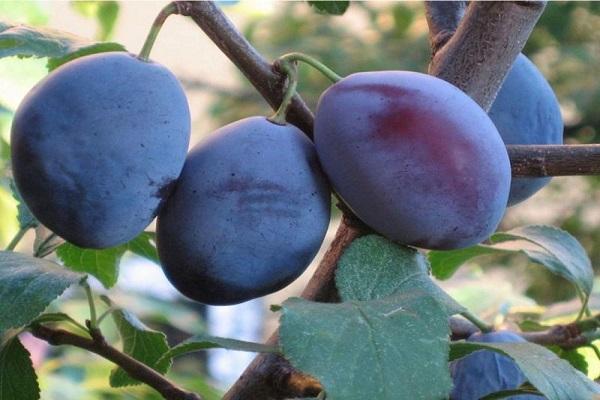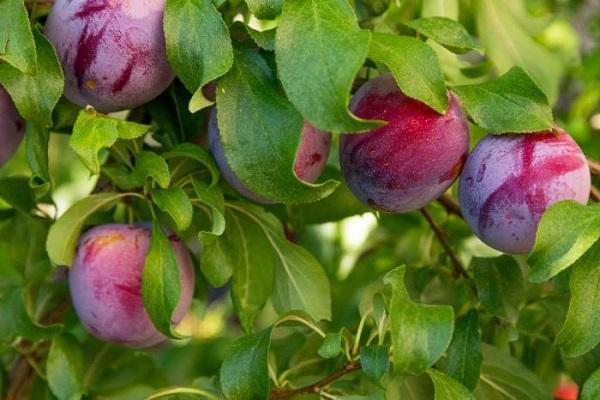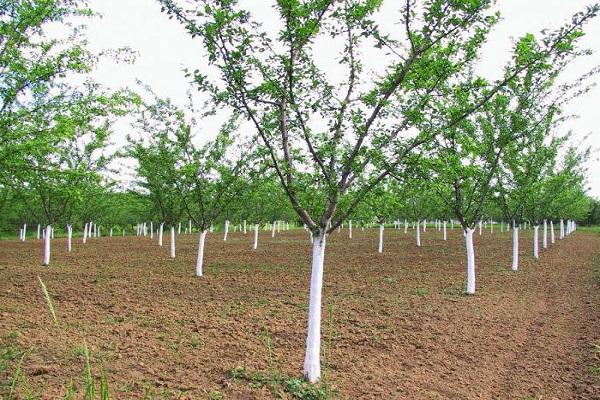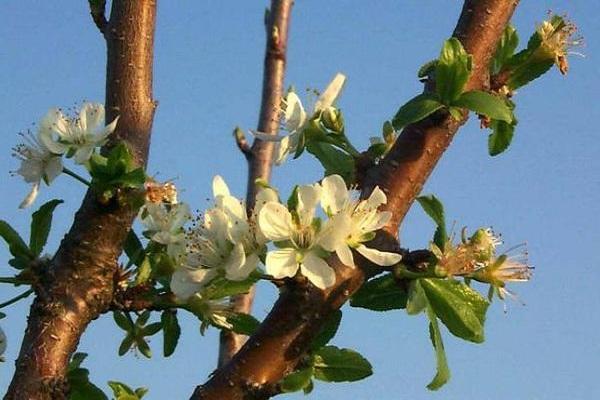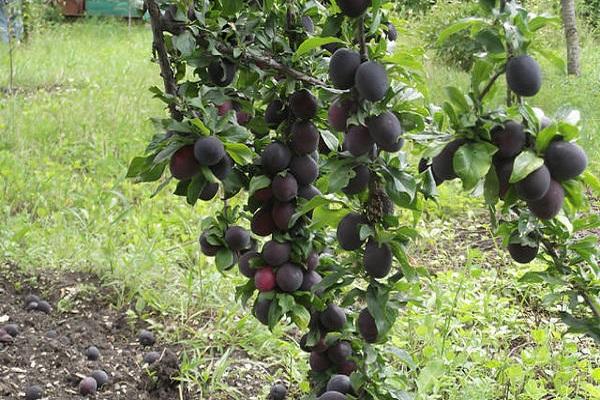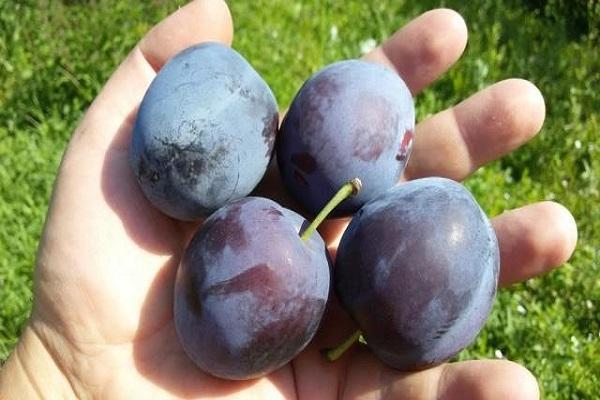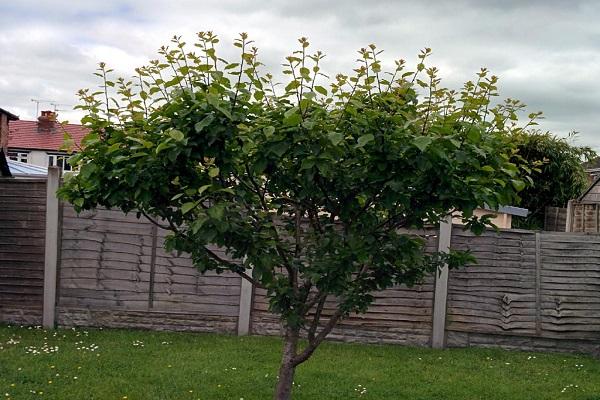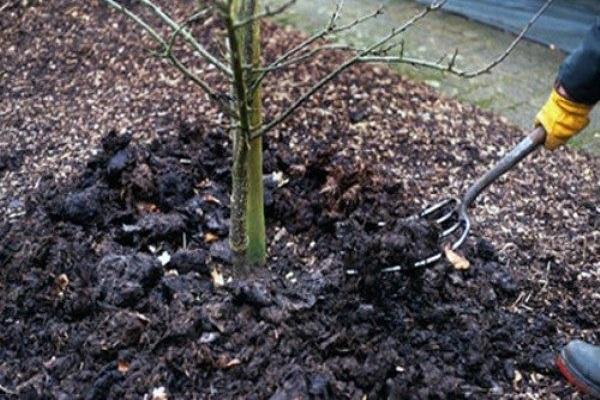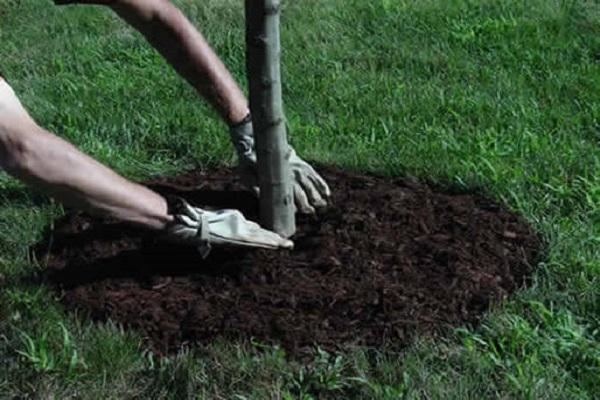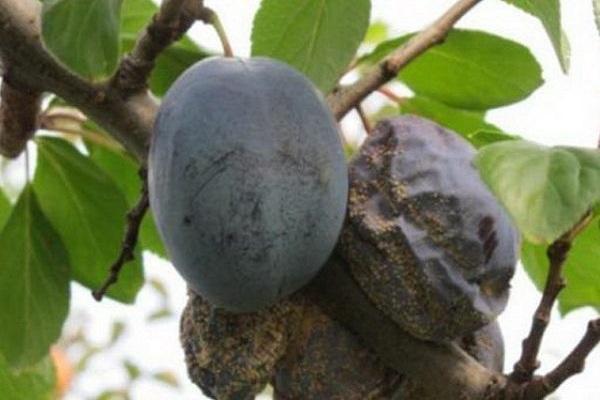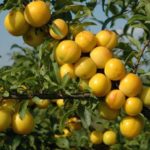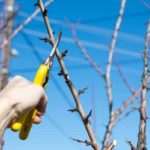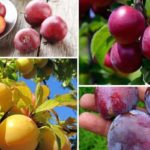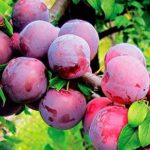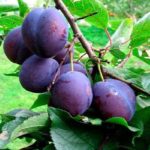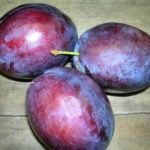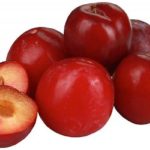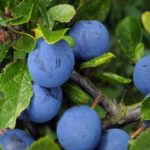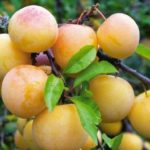The unpretentious plum Smolinka has rightfully gained its popularity among gardeners and gardeners. The tree provides its owners with tasty, juicy, healthy fruits that can be eaten both natural and processed.
- History of selection
- Description and varietal characteristics
- Suitable climatic conditions
- Characteristics of wood
- Pollinators and flowering
- Fruits and yield
- How to plant a plum on a plot
- Selection of planting material
- Deciding on the landing site
- Preparing the soil and planting seedlings
- Caring for young and mature trees
- Watering frequency
- What kind of fertilizer does plum like: fertilization technology
- Formative pruning
- Tree trunk care
- Diseases and pests: control and prevention
- Reviews from gardeners about the variety
History of selection
The Smolinka variety was bred by breeding by crossing two varieties, yellow Ochakovskaya and Renclad Ullens. Tests began in 1980 and only in the 90s of the last century the variety was entered into the state register. At the end of the trial period, the plum variety was recommended for cultivation in the central regions of the country.
Description and varietal characteristics
Fruit trees of the Smolinka variety have the following advantages:
- The variety has a high yield per 1 sq. m.
- Natural immunity to diseases and pests.
- Long-term storage of ripe fruits.
- The size of the fruit is distinguished by its large size.
- The pleasant, refreshing taste of plum characterizes it as a dessert fruit.
- Easily tolerates and quickly recovers from frost.
Flaws:
- Weak branches require additional supports, especially during fruit ripening.
- The large size of the plant makes it difficult to care for.
- Abundant fruiting occurs once every 3 years.
- The Smolinka plum will not bear fruit without a pollinator.
- Does not tolerate drought well.
- Ripe fruits fall off quickly.
The abundance of tasty and juicy fruits of the high-yielding plum variety outweighs its disadvantages.
Suitable climatic conditions
The Smolinka variety was bred specifically for central and central Russia, where climatic conditions are distinguished by their diversity. Plum easily tolerates frosts and quickly dies after the winter period. It tolerates heat well, but in dry times it requires intensive additional watering.
Characteristics of wood
Smolinka plum is characterized by its ability to grow rapidly. Mature fruit trees grow up to 5.5 meters, have an oval crown with medium or sparse vegetation.
The trunk is not thick and is framed by dense, rough brown bark. The average lifespan of a plum reaches 25 years.
Pollinators and flowering
Plum blossoms begin to bloom in mid-May, producing two white flowers from each bud. It must be pollinated, otherwise the plum will not bear fruit. Pollination occurs cross-pollination between trees that are planted no more than 50 meters from each other. Suitable for cross-pollination are cherry plums and other types of plums. If there are no plum crops in the neighboring areas, then you will have to take care and plant a few additional ones in your garden.
Another method of pollination is to graft cuttings of a related variety into the crown of the plant.
Fruits and yield
The ripe fruits of Smolinka are large, oval, with an average weight of 30 g. The dark purple fruit with a bluish waxy coating contains tender, juicy pulp with a sweet taste and a slight presence of sourness. Thanks to such taste characteristics, the fruit is considered dessert, but despite this, it is often used for processing and freezing.
The average fruit yield is 4-5 kg. per 1 sq.m. In a good season it can produce up to 40 kg of plums. The plum tree begins to bear fruit at 3-4 years of age.
Important! Plum pits contain hydrocyanic acid, which is dangerous to the human body. Canned products are stored for no more than 1 year.
How to plant a plum on a plot
To get a large harvest of fresh and tasty plums, you need to know how, when and where to plant a tree. And for this you need detailed instructions.
Selection of planting material
To plant a fruit tree, you need seedlings, the selection of which is a complex and important task.
- The seedling must be strong and healthy, not infected with pests and diseases.
- Large plants are more difficult to tolerate transplantation, and young seedlings are 1-2 years old and quickly take root.
- When choosing planting material, it is important to pay attention to the root system. Seedlings sold in pots do not allow detailed study of the roots, but such seedlings take root faster and are planted in open ground at any time.
- The leaves should be free of traces of parasites, various stains and rot.
When buying bare-rooted seedlings, pay attention to their pruning. With a root system that is too short, a young plum tree most likely will not survive.
Deciding on the landing site
Choosing the right place to plant plum seedlings is the key to a large and tasty harvest in the future.
- The tree loves good lighting. Sunlight affects the growth, ripening of fruits and their taste. The south side of the site will be the right choice for planting seedlings.
- The seedling should not be planted in a place where groundwater accumulates.
- Take into account the size of an adult tree, which, if planted incorrectly, can block the access of light to other plants and interfere with buildings on the site.
- Cold air currents and winds can also cause harm. Protection will be the proximity of a high fence or the wall of a house, located at least 2-3 meters from the seedling.
By following these rules when planting young trees, you can count on an abundance of tasty and juicy fruits.
Preparing the soil and planting seedlings
It is best to prepare the soil for planting plums in the fall. Soil with a high acid content is not suitable, so it is diluted with lime.
- The soil is mixed with humus, sulfate fertilizers and wood lime.
- Holes are dug no more than 70 cm deep and 90-100 cm in diameter.
- A seedling is placed in the hole, the roots are straightened and carefully buried. Each root should be well buried and not leave any empty space around it.
- The soil is compacted and thoroughly watered.
- After planting, both the central and lateral shoots of a young seedling are cut off.
Caring for young and mature trees
A young fruit tree requires special attention. This is especially true for good soil moisture during rapid growth and flowering. If the soil was well prepared and fertilized during planting, then the seedlings do not need additional feeding for 1-2 years. But trees planted in soil that is not saturated with useful substances require additional care.
Basic rules of care:
- Annual spring pruning.
- High-quality and timely watering.
- The plum is fertilized once every 3 years.
- Weed control around plum trees.
- Tilling and loosening the soil.
- Annual preparation for the winter period.
Watering frequency
The plum variety Smolinka is not resistant to arid climates. And young and flowering trees require additional moisture, because the quantity and quality of the harvest directly depends on it. If the amount of water in the soil is insufficient, the crop will begin to crumble.
In the first year of growth, the seedling is watered as needed, as soon as the soil seems dry. Mature plums require less moisture, so they are not watered as often. They receive a sufficient amount of water with abundant watering once every 10 days.
What kind of fertilizer does plum like: fertilization technology
The Smolinka plum is a large-fruited species, so it needs additional nutrition.During the period of fruit ripening, plums are fed with fertilizers high in potassium. And after fruiting, the tree needs replenishment with sulfates and phosphates.
Formative pruning
The first formative pruning of the seedling is carried out a year after planting in open ground. This procedure then occurs annually for 4-5 years until the tree is fully formed.
Initially, the main trunk is cut to 60 cm. Every year it is necessary to form 2-3 tiers of the crown from several of the strongest branches. After 5 years, the upper stem conductor is cut off, which limits the strong growth and height of the plum.
Tree trunk care
To prevent the plum from being exposed to frost and harmful influences, special care is required for the tree trunk circle. In the autumn, it is mulched with organic fertilizers with the addition of sawdust. This allows the root system to endure the cold season without freezing and unnecessary stress for the plant.
Diseases and pests: control and prevention
Like other plants, plums are susceptible to fungal and other diseases. Although this variety has developed immunity against fungi, sometimes the plum is exposed to the harmful effects of diseases such as:
- The fungal infection clasterosporiasis appears on the leaves as holes. Treatment occurs with special drugs that are sold in specialized stores.
- The fungus moniliosis causes the flowers on the plant to dry out. To fight, the affected areas are cut off and treated with special solutions.
- Gomosis, or secretion of resin. The areas are treated with solutions containing copper sulfate.
- When fruit rot occurs, complete pruning of the affected fruits and affected areas is necessary.
The most common pests on the Smolinka plum are the fat stalk, codling moth, sawfly, aphid and gall mite. To combat such pests, special preparations are needed.
Reviews from gardeners about the variety
Nina, Moscow.
The Smolinka plum is simply magnificent, large and has very high taste.
Ivan, Krasnodar.
The plum variety Smolinka grows in the garden; we do not get a full harvest every year. And I also don’t like that we don’t have time to harvest the entire harvest, the berries fall off.

